Renewable Energy
Transforming our environment and communities, with integrity and vibe

Nature-Based Solutions and Beneficial Use
Transforming our environment and communities, with integrity and vibe
Anchor QEA's internationally renowned experts span disciplines and geography to plan, develop, design, and deliver nature-based solutions and beneficial use for climate and coastal resilience.
With more than 500 team members across all coasts of the United States, Anchor QEA advances nature-based solutions (NBS) and beneficial use (BU) through leadership in engineering guidance and groundbreaking applied research. Whether managing an entire program from inception to completion, or engaging at critical stages of a process, we begin every project by assembling the best possible team.
We believe a multidisciplinary approach is essential, as well as partnering with organizations and agencies, to solve the multifaceted environmental challenges facing our communities now and into the future.
Get in touch with Anchor QEA's leaders in nature-based solutions and beneficial use.
Services
- Engineering With Nature integration
- Natural and nature-based features integration
- Coastal and riverine restoration and resilience
- Climate adaptation and mitigation planning
- Waterway dredging and beneficial reuse design
- Sustainable sediment management
- Adaptive monitoring and project life-cycle management
- Community, stakeholder, and agency engagement
Anchor QEA is a partner in solar power development.
We provide ecological assessments, environmental siting, geotechnical and civil engineering, brownfield development, and stormwater management, as well as permitting and regulatory services to ensure projects comply with applicable statutes.Working with developers and utilities across the United States, our teams assist planning and construction phases of utility-scale, grid-connected solar projects.
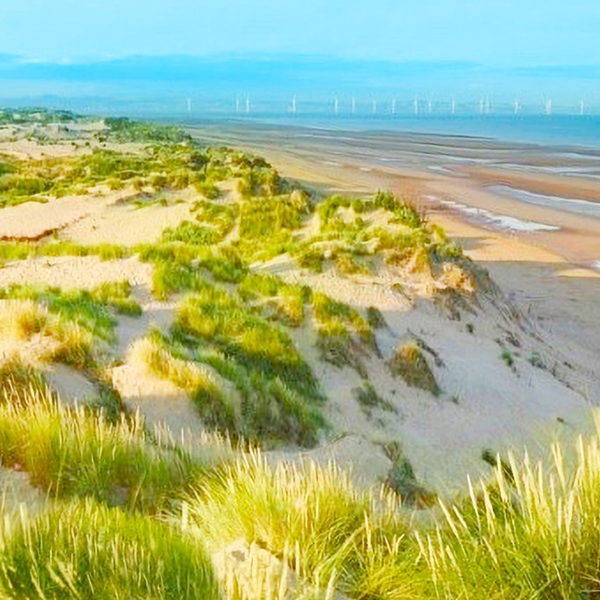
Engineering With Nature and Nature-Based Solutions Framework
Nationwide, United States
Partnering with the Dredge Research Collaborative (DRC), Anchor QEA worked alongside the U.S. Army Engineer Research and Development Center (ERDC) and USACE Buffalo, Chicago, Detroit, Mobile, Philadelphia, and San Francisco Districts to develop a natural and nature-based features (NNBF) framework featuring Engineering With Nature (EWN) and BU techniques advancing the implementation of NBS into resiliency strategies and supporting USACE missions.
This initiative will culminate in the upcoming Four Coasts Project Innovation Handbook, a compendium of innovative EWN projects highlighting identified NNBF best practices and conceptualized preliminary modeling substantiated concepts.
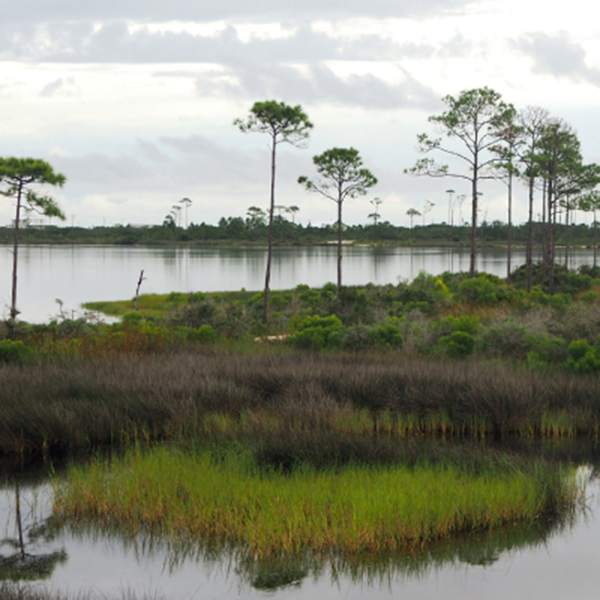
Strategic Dredge and Beneficial Use Technology Innovation
Nationwide, United States
Anchor QEA is working with ERDC’s Dredging Operations Environmental Research program to assist USACE with the advancement of BU of dredged material (BUDM) in support of its goal to increase BUDM to 70% by the year 2030.
Anchor QEA undertook BU surveys and data evaluation to identify and address key barriers to BU, identify key contributors required for successful implementation and collaboration, summarize lessons learned and best management practices, and collaborate on enterprise-wide implementation. Findings and a path forward will be presented in a series of technical notes and reports.
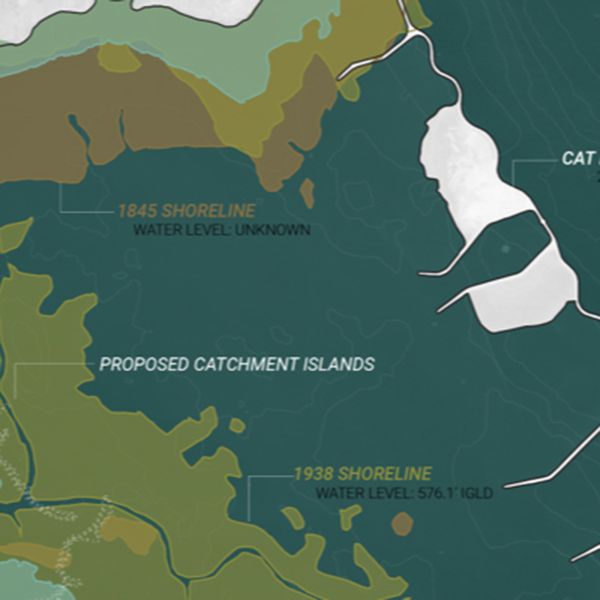
USACE Great Lakes Coastal Resiliency Study and Engineering With Nature Playbook
Great Lakes Region
Anchor QEA in partnership with DRC is working closely with USACE Chicago, Detroit, and Buffalo Districts, to develop project ideas to incorporate EWN/NNBF and multiple-lines-of-defense strategies, informing the larger Great Lakes Coastal Resiliency Study.
Work is being conducted with the Districts and local stakeholders to review the entire Great Lakes shorelines and identify vulnerable areas where EWN/NNBF and BU can be used to provide resiliency by building upon previous regional research, conceptually developing potential projects, and developing a Great Lakes EWN Playbook with specific strategies for implementation of EWN/NNBF components.
Anchor QEA leads environmental impact assessments, due diligence, and permitting compliance for wind energy facility siting nationwide.
From habitat and biological assessments to compliance oversight under Section 106 of the National Historic Preservation Act, our team provides start-to-finish development and support.Learn more about our offshore wind services.
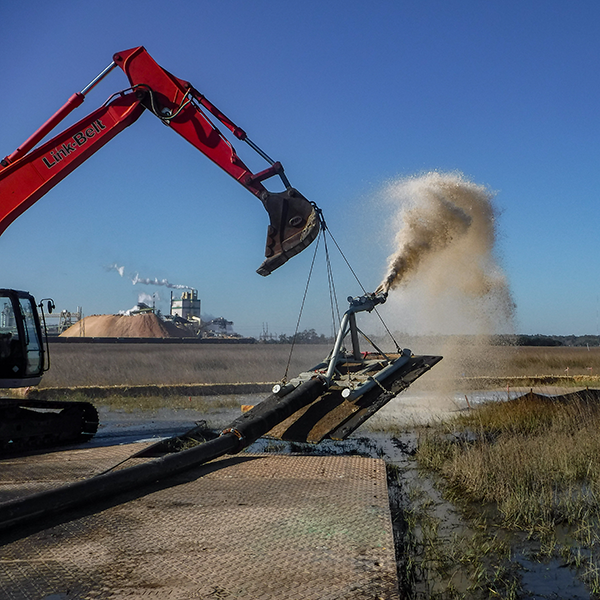
Legacy Site Restoration
Brunswick, Georgia
For this first large-scale, thin-layer cover (TLC) placement project in North America, Anchor QEA worked with Honeywell, the U.S. Environmental Protection Agency (USEPA), and the State of Georgia to conduct site investigations, engineering design, and implementation of a restoration plan to remediate the 24-acre marsh system that was historically impacted by PCBs, PAHs, mercury, lead, and dioxins.
Three years after the pilot study and full-scale project design, permitting, and construction were completed, monitoring showed the marsh areas that received the TLC are demonstrating vigorous natural vegetative recolonization and recovery.
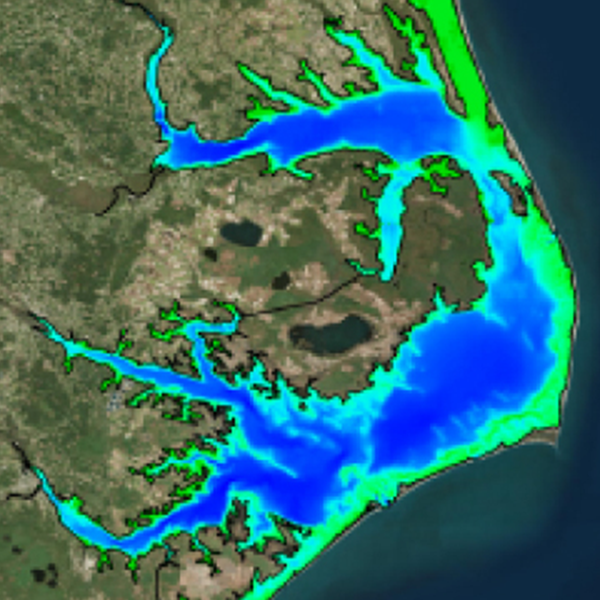
Pamlico Sound Hydrodynamic Model
North Carolina
Through Anchor QEA’s extensive experience partnering with entities for coastal and riverine restoration in North Carolina, a 3D hydrodynamic and salinity model of Pamlico Sound was developed to evaluate the effectiveness of oyster reef restoration in the Sound using various substrate types.
This model domain covers all of Pamlico Sound and Albemarle Sound and can be used to identify the applicability of various NBS/EWN/BU concepts for the area that have maximum regional impact for coastal resilience and ecological benefit and subsequently design these systems to maximize longevity.
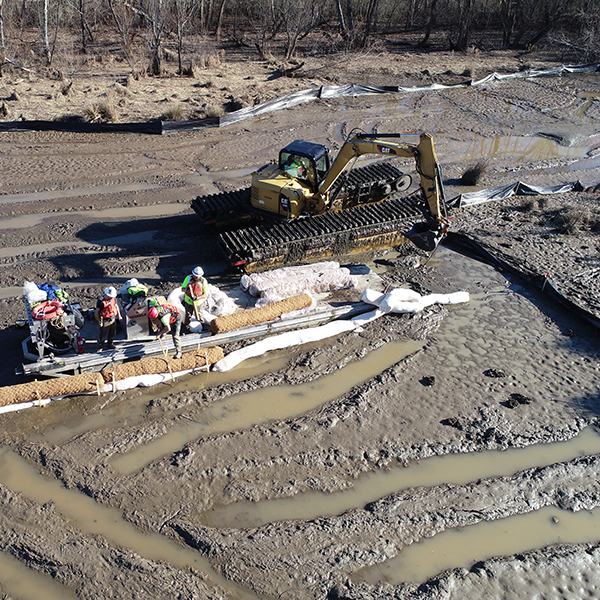
Lake Adger Maintenance Dredging
Lake Adger, North Carolina
Anchor QEA worked with the North Carolina Wildlife Resources Commission to design and permit dredging of Lake Adger’s navigation channel. With no viable option for off-site disposal, a solution was developed using the dredged sediment to enhance and expand existing wetlands.
Anchor QEA performed hydrodynamic modeling to confirm that no-rise conditions were met, assess the structural integrity of the proposed wetland, and assess the potential for modifying flow channels of the Green River minimizing future dredging needs. Modeling of the Green River resulted in a cost-effective approach to the overall project.
Anchor QEA works for public agencies and special districts to effectively plan, design, and permit water resources management and maintenance projects.
We provide planning services for large water users, such as irrigation districts, hydroelectric plants, and municipalities, that balance water needs with natural resource needs, such as instream flows, recreation, and wetland preservation.
Learn more about our hydropower services.
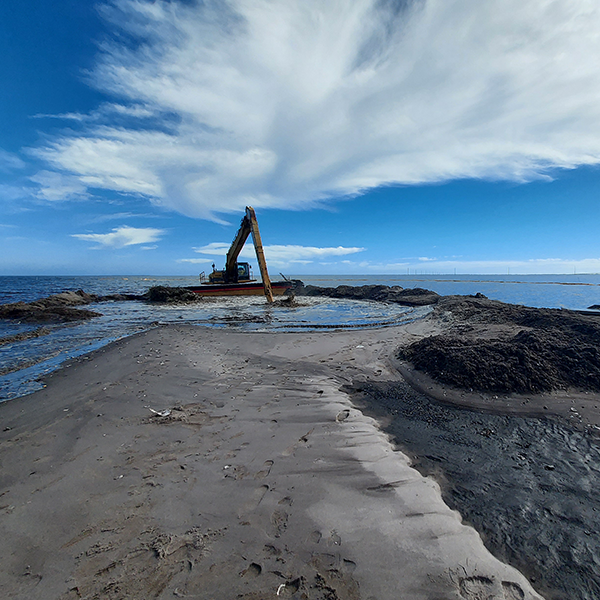
Eastpoint Federal Navigation Channel Beneficial Use
Franklin County, Florida
USACE wanted to evaluate BU alternatives for the Eastpoint Federal Navigation Channel using NNBF (EWN). The project included developing alternatives, cost estimates, comparative analysis and final design, and specifications for the selected alternative.
Anchor QEA performed geotechnical investigations, coastal engineering and alternatives analyses, BU cell design, and dredging plans and specifications. The sandy BU berm was designed to achieve stability by incorporating a long slope toward the bay, aligning with the natural movement of sediment while containing dredged material to create marsh along existing rock jetties, protecting the navigation channel.
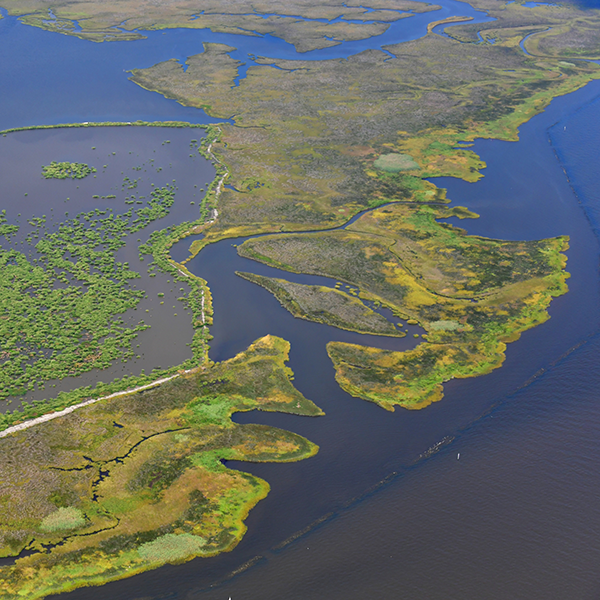
Hancock County Marsh Living Shoreline
Hancock County, Mississippi
Born from Natural Resource Damage Assessment funds, this project preserves and protects existing habitat while providing secondary shellfish productivity areas. Prior to living shoreline construction, the Hancock County Marsh Coastal Preserve was the fastest-eroding marsh in Mississippi, with losses equaling 7 acres of intertidal marsh annually.
The living shoreline design uniquely combines 6 miles of segmented breakwaters with 46 acres of subtidal reef and 46 acres of restored marsh to reduce storm damage while enhancing aquatic habitat. Since construction, the breakwaters have weathered multiple storms and hurricanes with minimal damage.
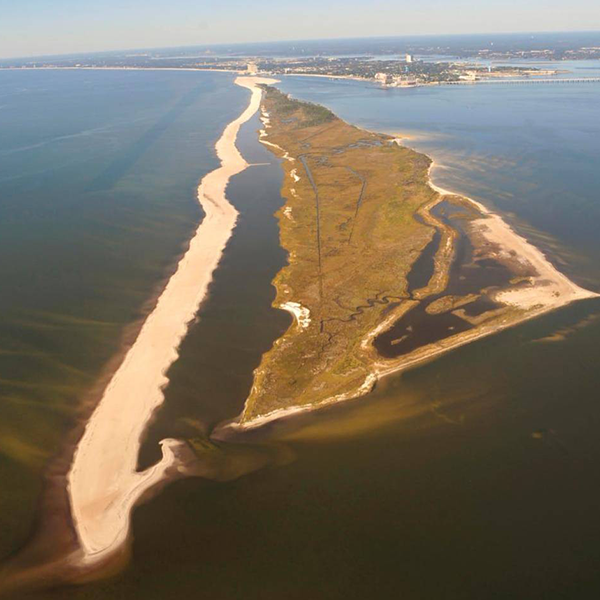
Deer Island Marsh
Biloxi, Mississippi
Working with the Port of Gulfport and the Mississippi Department of Marine Resources (MDMR), Anchor QEA is the designer-of-record for rebuilding sections of the existing Deer Island marsh and living shoreline systems damaged by Hurricane Katrina and expanding the site along the north shoreline to support the port restoration program and state BU law.
Our team developed sediment testing criteria and coordinated construction and placement alternatives with the state and federal Beneficial Use Group (BUG). This collaboration yielded permitting and current and future site development uses cost savings.
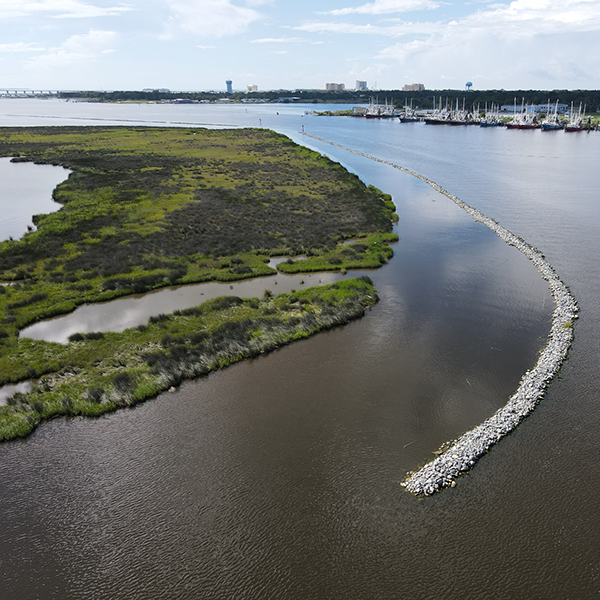
Beneficial Use Concept Planning, Maintenance, and Adaptive Management
Jackson and Harrison Counties, Mississippi
Anchor QEA plans and conducts reconnaissance-level field investigations for proposed Mississippi BU sites, including investigations of Pelican Key, Tennessee Gas Pipeline, and Railroad Corner.
Anchor QEA has supported conceptual-level layouts, developed artists’ renderings, and worked with the MDMR BU program to conduct public workshops with regional stakeholders and community leaders. Using existing model results, geophysical data from adjacent projects, and environmental studies for endangered species, the team worked with MDMR to develop the concepts and a design for the 28,000-linear-foot containment berm for restoring the Pelican Key barrier island.
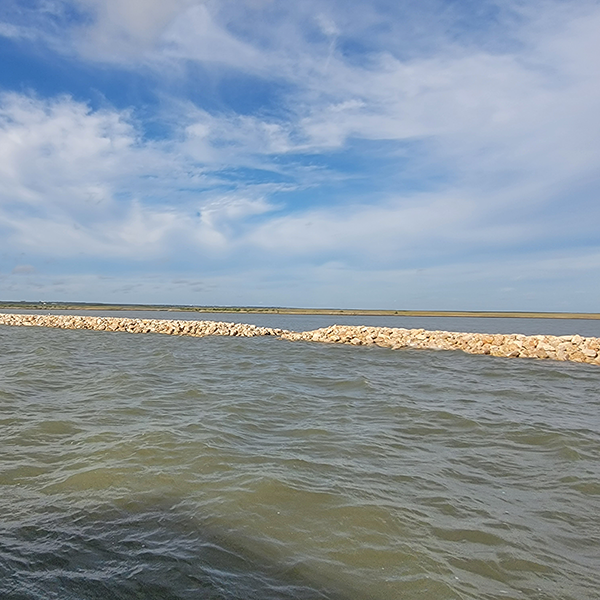
Nueces Delta Shoreline Protection and Restoration
San Patricio, Texas
For this National Fish and Wildlife Foundation-funded project, a 0.75-mile rock breakwater was implemented to reduce erosional wave energy transmitted to the shoreline. It protects and restores important habitat for bird species—such as white pelicans, brown pelicans, reddish egrets, black skimmers, least terns, snowy plovers, and piping plovers—impacted by the Deepwater Horizon oil spill.
Anchor QEA performed coastal modeling and permitting, developed final designs and construction documents, performed construction administration and observation, and provided recommendations for the monitoring and adaptive management plan.
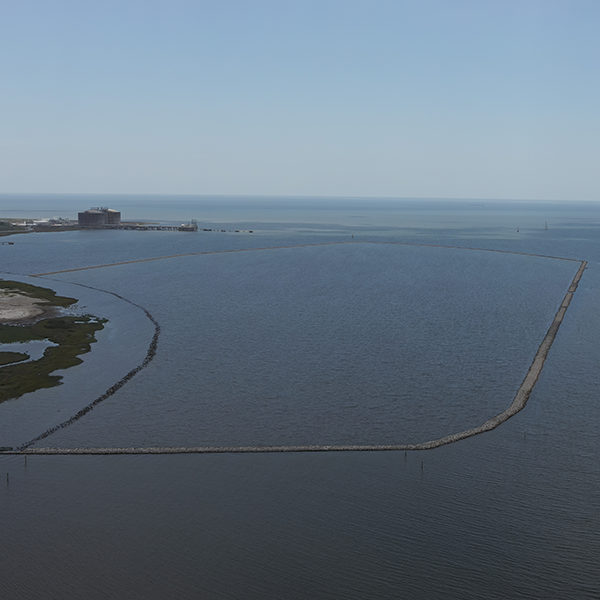
Greenwood Island Beneficial Use Expansion
Pascagoula, Mississippi
For the RESTORE-funded Enhancing Opportunities for Beneficial Use of Dredge Sediments in the Mississippi Sound project, Anchor QEA designed a 2-mile rock containment to create a BU site for restoring 210 acres of coastal marsh using dredged material.
Anchor QEA performed coastal modeling; developed conceptual designs; performed bathymetric surveys, geotechnical borings, and cultural resource surveys; prepared permits, 100% design drawings, specifications, and an Opinion of Probable Construction Cost; and completed bid assistance, contractor selection, and construction management. The design and construction phases were completed under budget due to Anchor QEA’s efficiency.
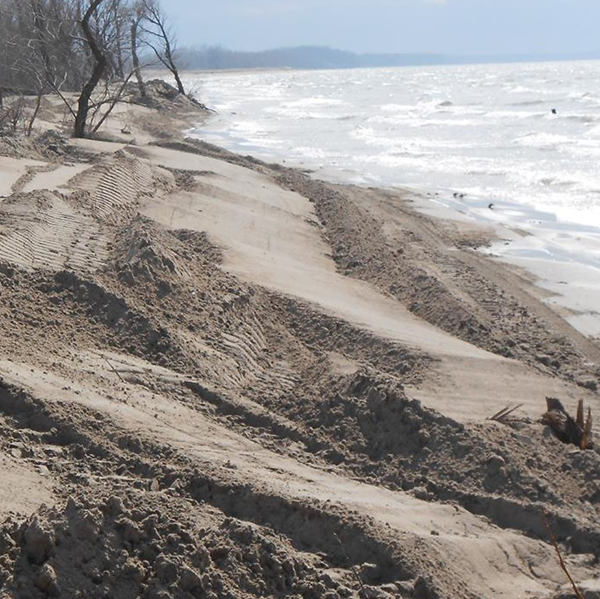
North Sandy Pond Barrier Island Restoration
North Sandy Pond, New York
Centered at an ecosystem of dunes, beaches, and sandbars, North Sandy Pond is protected from the lake by 3 miles of beaches and connects to Lake Ontario through a narrow inlet. Its shoreline experienced heavy beach erosion due to record-high lake levels and wind-driven waves in 2017 and 2019.
In support of the North Sandy Pond Resiliency Project, Anchor QEA provided coastal engineering and restoration services, including development of management alternatives and conceptual designs, such as BUDM, to develop a resilient shoreline and protect the barrier beach system.
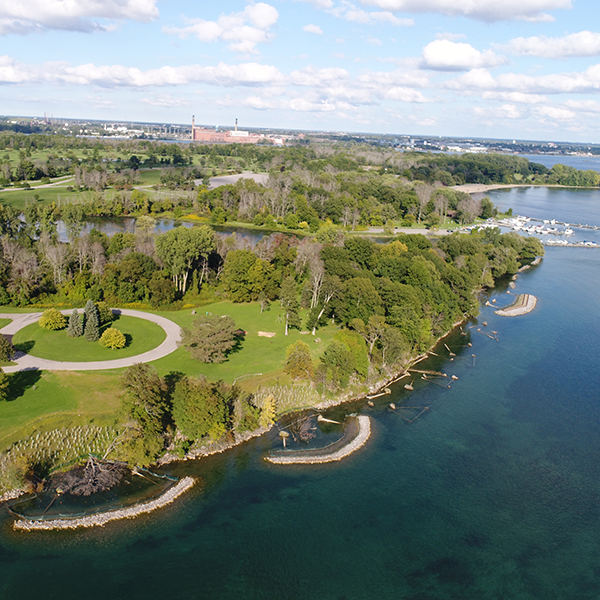
Little Beaver Island
Grand Island, New York
At Little Beaver Island State Park, high-velocity currents, wind-driven waves, and ice scour contributed to extreme bank erosion and property loss along 1,000 feet of shoreline and nearshore habitat. To improve resiliency and address erosive forces, riparian and coastal wetland habitat was created and restored.
Anchor QEA developed all habitat design plans, technical specifications, and cost estimates and provided construction contract administration for Buffalo Niagara Waterkeeper. Since construction, the resilient design has withstood the effects of multiple winter storms.
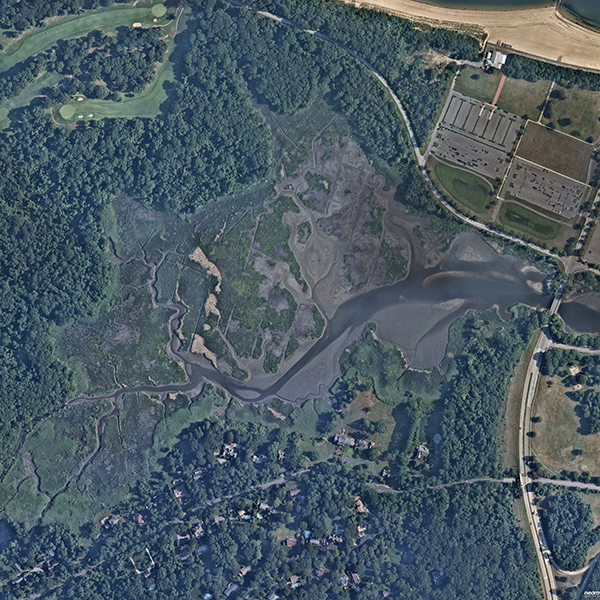
Sunken Meadow State Park Salt Marsh Restoration
Kings Park, New York
Anchor QEA was selected by Audubon New York and its partners to design the restoration and enhancement of an approximately 400-acre tidal marsh on the north-central coast of Long Island. The marsh has experienced restricted tidal flow since an earthen berm was breached in 2012 during Superstorm Sandy, leading to marsh degradation, which converted portions of the former salt marsh to brackish and freshwater marsh.
The Anchor QEA team, including Princeton Hydro, developed a site-specific hydrodynamic model, engineering designs, a long-term management plan, and a quality assurance project plan.
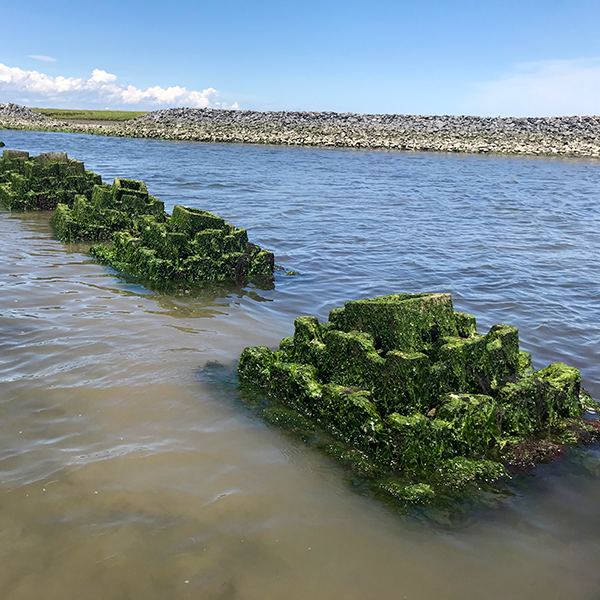
Shooting Island Living Shoreline
Ocean City, New Jersey
With New Jersey’s largest living shoreline at the time, the Shooting Island wetland provided protection to back-bay communities from flooding and storm surge. The island experienced significant shoreline loss due to ongoing erosive processes, sea level rise, and Hurricane Sandy damage and needed to be restored.
Anchor QEA led planning, permitting, shoreline and wetland restoration and design, field data collection, and construction management for the living shoreline. The team developed a sustainable solution for long-term protection of the marsh edges using innovative techniques like oyster castle installation and low crested sills.
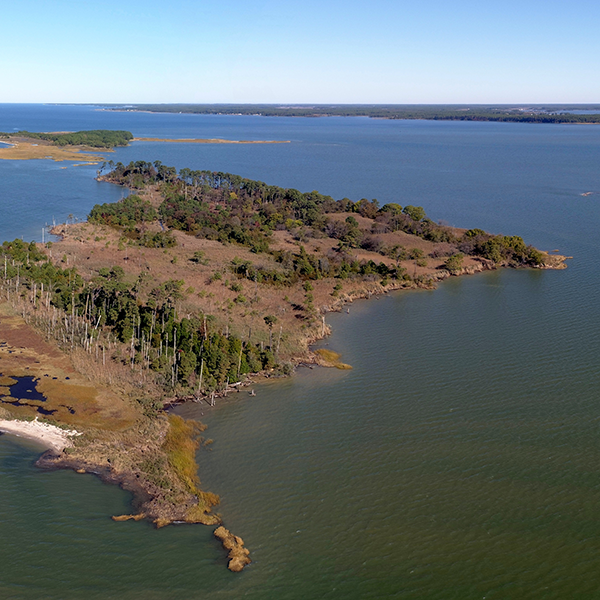
Chesapeake Mid Bay Islands Engineering and Erosion Prediction Modeling Studies
Chesapeake Bay, Maryland
Maryland Port Administration, Maryland Environmental Service, and USACE Baltimore District are studying the technical, economic, and environmental feasibility of protecting, restoring, and creating aquatic intertidal wetland and upland habitat for fish and wildlife at mid-Chesapeake Bay islands.
Anchor QEA led a shoreline change geomorphologic and numerical evaluation for James and Barren Islands, performed quantitative estimates of historical and future shoreline change, and developed a systematic analysis to evaluate shoreline planform changes. Study results were used to evaluate the proposed restoration plans effectiveness and identify critical shoreline areas requiring special attention.
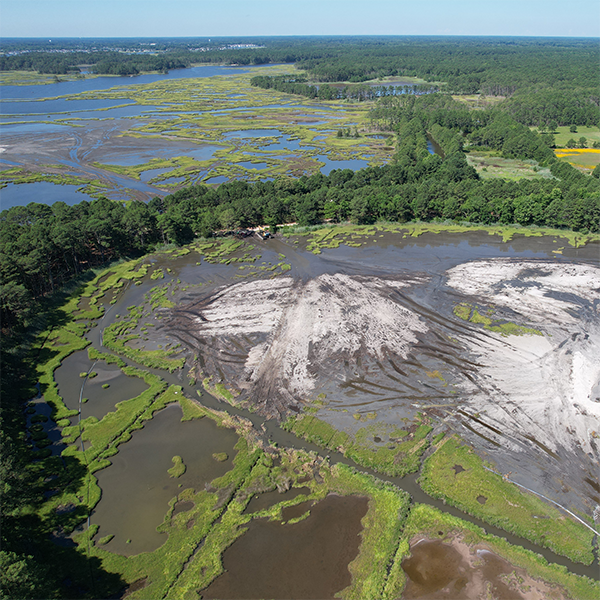
White Creek Beneficial Use Dredging and Muddy Neck Wildlife Refuge Habitat Restoration
Ocean View, Delaware
To restore severely degraded coastal salt marshes in one of Delaware’s premier parks, Anchor QEA, as part of a JV team, implemented a sediment beneficial use project that provides elevational uplift to combat climate effects for this wildlife area along the Inland Bays.
Living shoreline, beach, and marsh platform beneficial use options were explored. Ultimately, thin-layer placement of dredged material was selected for the Muddy Neck Marsh Complex, making it the first large-scale thin-layer placement marsh restoration in Delaware.
.png)
Section 1122 Beneficial Use of Dredged Material Pilot Project
San Francisco, California
Anchor QEA conducted hydrodynamic and sediment transport modeling to support the selection of a pilot site to examine the ability of tides and currents to move the dredged sediment placed in the nearshore environment to existing marshes, making them more resilient to rising sea levels.
Ultimately, Anchor QEA's model was used to identify the most appropriate site for a pilot study and to evaluate different sediment placement strategies. The “sediment engine” concept of having environmental systems distribute the sediment represents an innovative solution to problems associated with sea level rise.
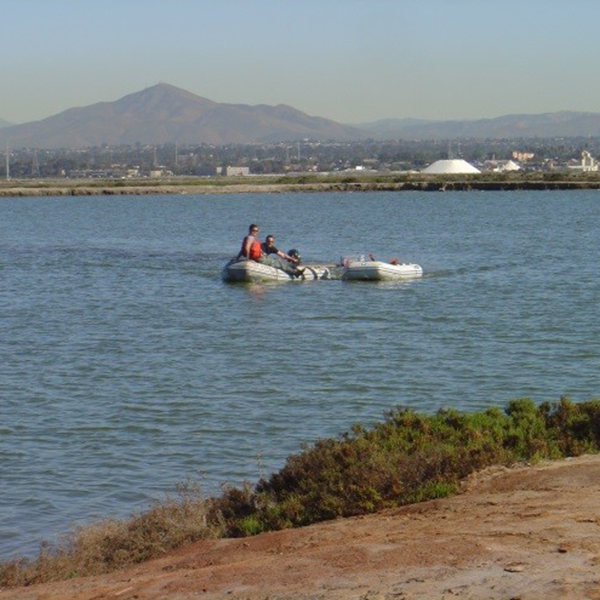
South San Diego Bay Salt Pond and Otay River Restoration
San Diego, California
The Otay Floodplain and Salt Works Salt Ponds historically had poor drainage resulting in regional flooding. As part of a mitigation agreement, Poseidon Water agreed to design and implement a restoration program to convert former salt ponds into marsh and intertidal habitat and add green infrastructure, including bioswales for capturing and treating stormwater prior to discharge into the marsh areas.
Anchor QEA led the design, permitting, and stakeholder coordination; led geotechnical and chemistry studies; conducted extensive hydraulic modeling; and will now oversee construction for this multiyear restoration project.
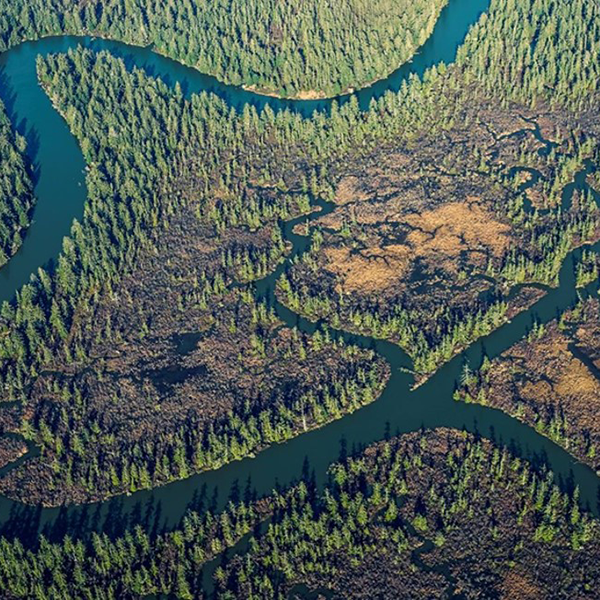
Chehalis River Basin Strategy
Lewis, Thurston, Grays Harbor Counties, Washington
Anchor QEA leads a team of consultants in the preparation and analysis of a comprehensive set of long-term actions to reduce flood damage and restore aquatic species habitat in the 2,400-square-mile Chehalis Basin.
Anchor QEA has inventoried the basin and authored and managed the completion of the Programmatic State Environmental Policy Act Environmental Impact Statement (EIS), a project-specific EIS, and numerous technical studies assessing hydrologic and hydraulic conditions; geomorphic and sediment transport; water quality; fish population; habitat, wetland, and wildlife inventory; land use; economic conditions; and cultural resources.
We look forward to continuing the conversation.
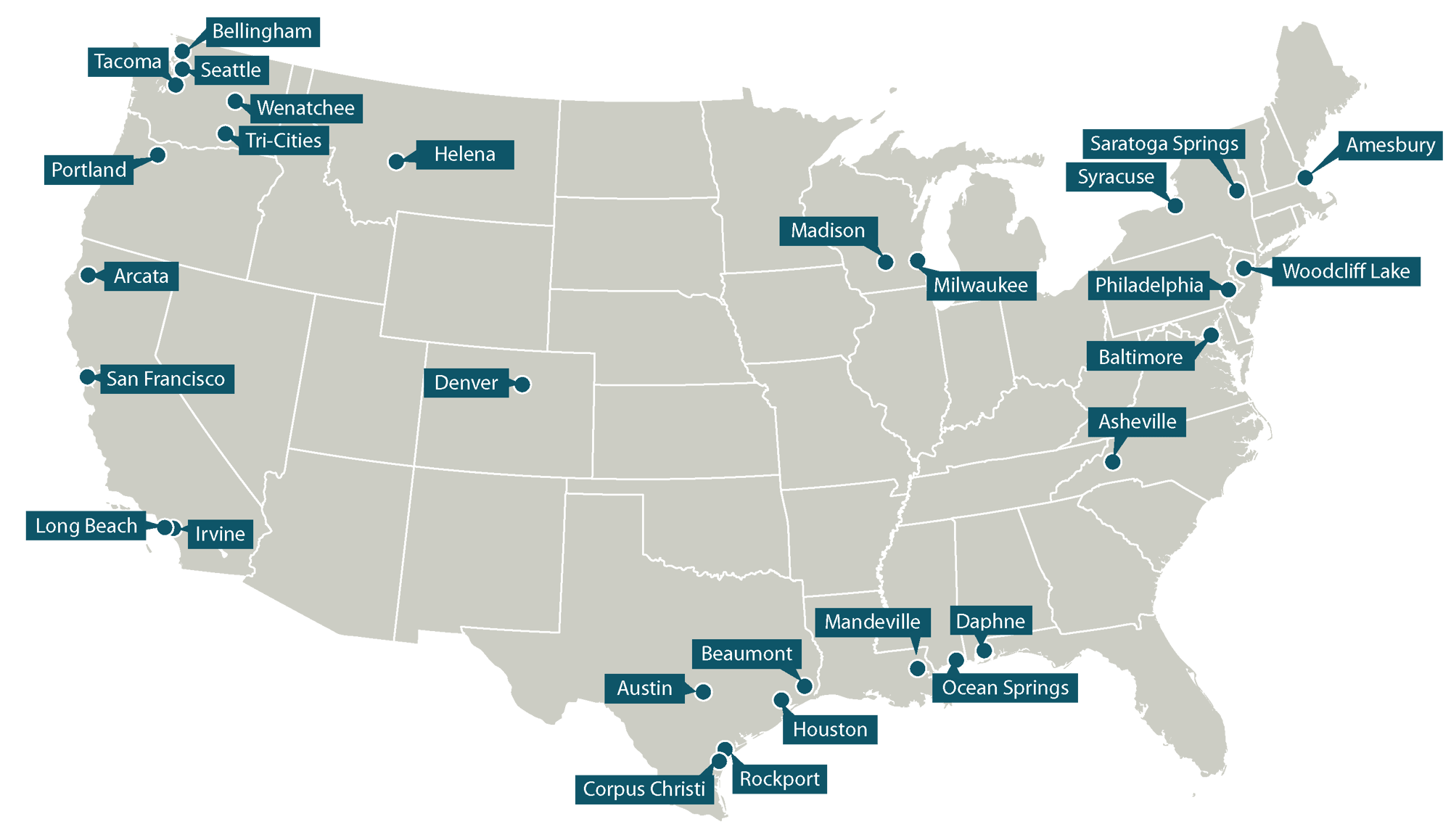
Our People
Since the company’s beginning, Anchor QEA’s success has been mission-driven, strengthened by our dedication to ethical and sustainable business practices. In 2023, we elevated these practices by continuously improving our sustainability commitments, focusing on our People, our Community, and our Environment (PCE).
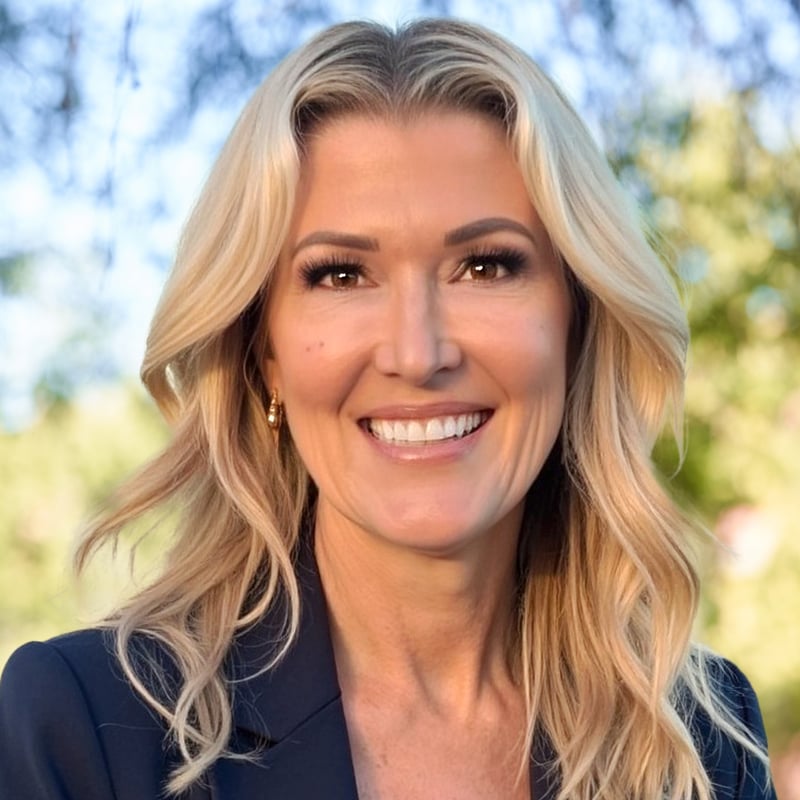
Gretchen Taylor
Energy Sector Lead
(415) 361-5162
gtaylor@anchorqea.com
Explore our offshore wind experience.
Meet The Team
Lorem ipsum odor amet, consectetuer adipiscing elit. Morbi congue eget, elementum iaculis nulla enim.
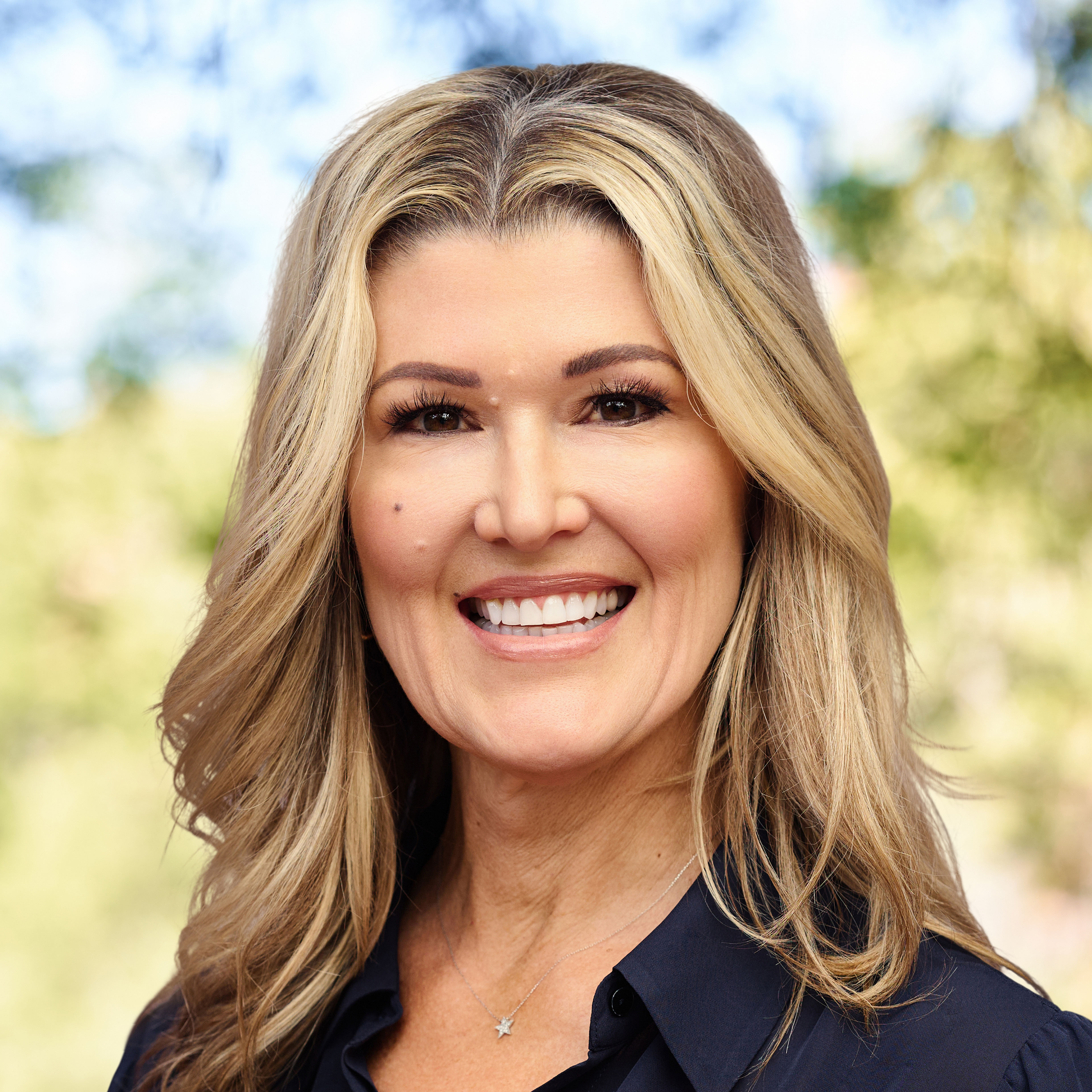
Gretchen Taylor
Get in Touch with Anchor QEA
The headline and subheader tells us what you're offering, and the form header closes the deal. Over here you can explain why your offer is so great it's worth filling out a form for.



